Here in this article, we will study the chords of A Major in detail. If you want to revise the basics of chords first, you can go through the overview of chords here.
Let’s first take a look at what all keys appear in A Major. We start with noting down the A Major scale and giving each note a degree number.
| A | B | C# | D | E | F# | G# | A |
| 1 | 2 | 3 | 4 | 5 | 6 | 7 | 1 |
Now, we will begin with revising the tonic or home chord of A Major Scale. This is the chord that is built on 1st note of the scale. To build the triad, take 1st, 3rd and 5th notes, i.e., A, C#, and E respectively. Play them together and you will get a A Major Triad! Just remember the pattern for any triad: play one note, skip one note, play one note, skip one note, and play one note.
And also remember the notation – Major chords are numbered in capital romans, while minor chords in small letters. And the diminished chords are numbered in small letters followed by °.
Primary Triads (Chords) of A Major
Now since you have excelled the Home chord of A Major, it is time to move on to the other triads that are used in this key. These are called Primary triads or chords.
Each scale has 3 Primary Triads, built on 1st, 4th, and 5th degrees of the scale. Let’s have a look at A Major scale again.
| A | B | C# | D | E | F# | G# | A |
| 1 | 2 | 3 | 4 | 5 | 6 | 7 | 1 |
In this scale, the 1st key is A, 4th is D, and 5th is E. So we will be using these 3 notes to build our Primary Chords. Remember the notation: Major chords are numbered in capital Romans, and minor chords are numbered in small letters.
Chord I- A Major: A C# E
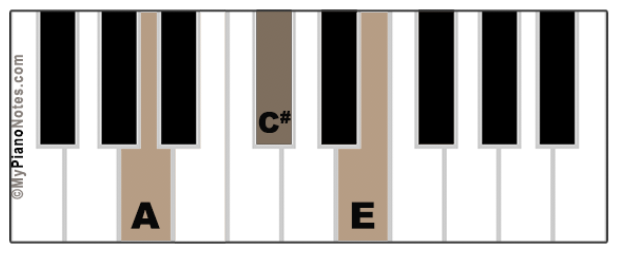
Chord IV- D Major: D F# A
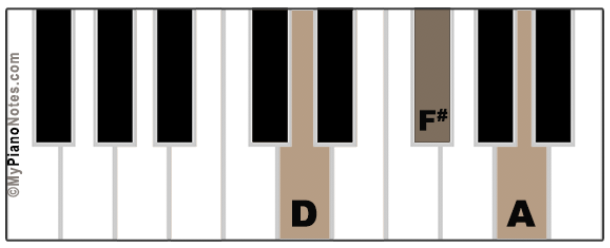
Chord V- E Major: E G# B
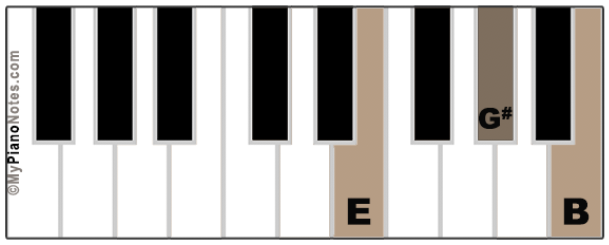
These were the 3 Major Triads of A Major scale. Since we are building triads on the major scale, all primary triads will be major triads.
Secondary Triads (Chords) in A Major
Secondary triads are built on 2nd, 3rd, and 6th notes of a scale. Repeat the pattern of playing one note and skipping one note till the time you get three notes in the triad. And all the secondary notes in this Major scale will be Minor.
- Chord ii – B Minor: B D F#
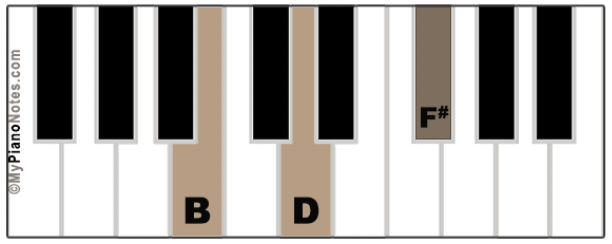
- Chord iii – C# Minor: C# E G#
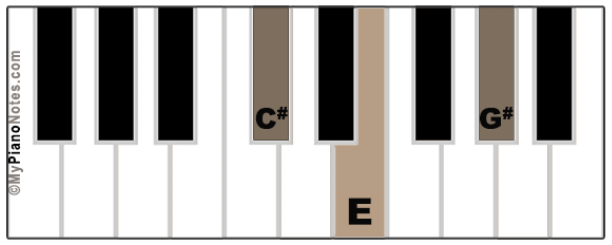
- Chord vi – F# Minor: F# A C#
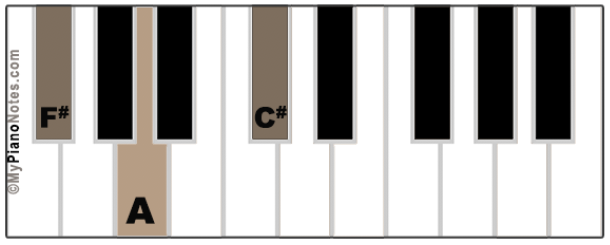
Notice that chord vi is the tonic chord of A Major’s relative minor— F# Minor.
Chord vii° – G# diminished
Here we will build a chord on the 7th degree of a scale, known as a diminished triad. You will notice that playing this chord will produce a dark sound. In A Major, this chord is G# diminished: G# B D.
Extended Chords
Using all the notes of A Major scale, we will build the following 4-note seventh chords.
- A Major 7th: A C# E G#
- B Minor 7th: B D F# A
- C# Minor 7th: C# E G# B
- D Major 7th: D F# A C#
- E Dominant 7th (G7): E G# B D
- F# Minor 7th: F# A C# E
- G# Minor 7th Flat 5th (G#m7b5): G# B D F#
More Chords in different Keys:
- C Major
- D Major
- E Major
- F Major
- G Major
- A Major (You are reading this)
- B Major
- C Minor
- D Minor
- E Minor
- F Minor
- G Minor
- A Minor
- B Minor
- Genda Phool - May 27, 2020
- Qismat - May 27, 2020
- Naagin (Aashta Gill) - May 24, 2020





